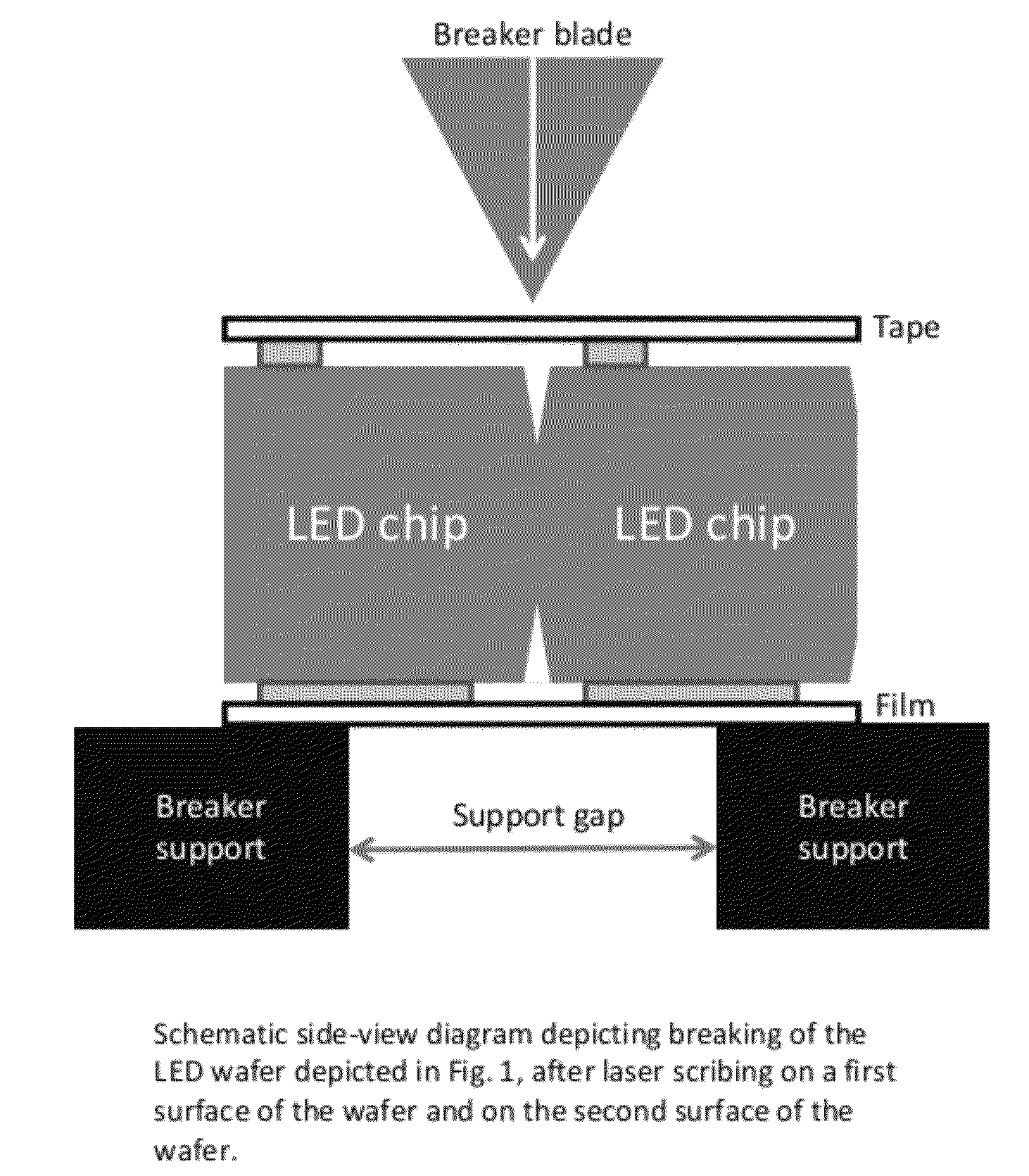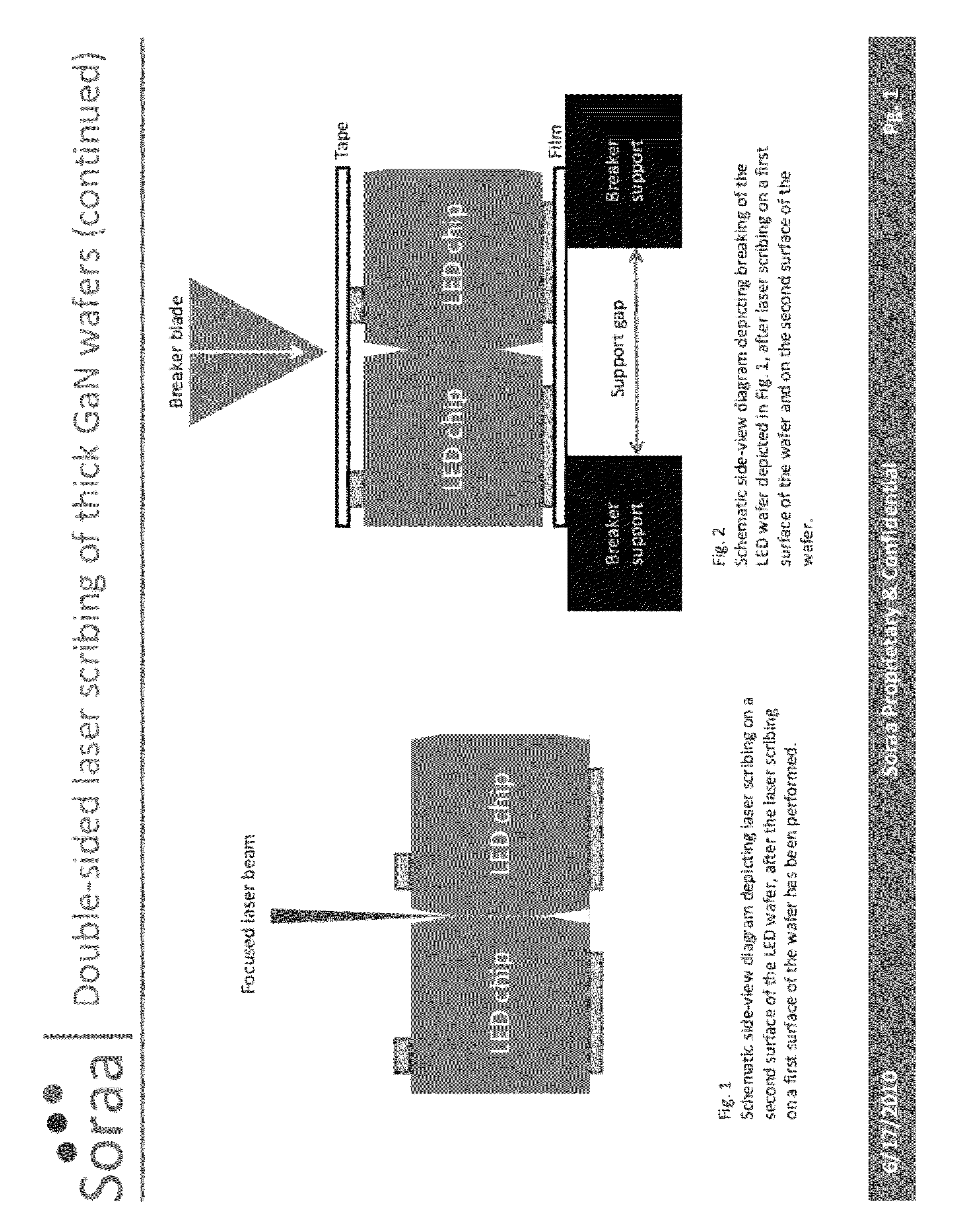Singulation method and resulting device of thick gallium and nitrogen containing substrates
a nitrogen-containing substrate and sulfur-containing technology, applied in the field of lighting techniques, can solve the problems of reducing the efficiency of conventional edison light bulbs, reducing the efficiency of conventional light bulbs, and reducing the frequency of chip-outs, so as to reduce the need for expensive and time-consuming lapping and polishing steps, and reduce the incidence of chip-outs
- Summary
- Abstract
- Description
- Claims
- Application Information
AI Technical Summary
Benefits of technology
Problems solved by technology
Method used
Image
Examples
Embodiment Construction
[0016]FIG. 1 is a side-view diagram depicting a laser scribing process for an optical device according to an embodiment of the present invention. In a specific embodiment, the LED wafer is laser-scribed within the ‘scribe streets’ on a first surface of the wafer, along one or more axes according to a specific embodiment. In other embodiments, the scribing can occur using a saw, a diamond scribe, a chemical etchant (with or without a photo-assisted component), reactive ion or plasma etchant or milling, or combinations, and the like. The scribe depth in the scribed regions on the first surface is typically 20-25% of the thickness of the LED wafer according to a specific embodiment. In other embodiments, the scribe depth can vary and have other dimension. In a specific embodiment, the scribe line also has a suitable width and length Of course, there can be other variations, modifications, and alternatives.
[0017]In a specific embodiment, the LED wafer is then flipped over, and is then l...
PUM
 Login to View More
Login to View More Abstract
Description
Claims
Application Information
 Login to View More
Login to View More - R&D
- Intellectual Property
- Life Sciences
- Materials
- Tech Scout
- Unparalleled Data Quality
- Higher Quality Content
- 60% Fewer Hallucinations
Browse by: Latest US Patents, China's latest patents, Technical Efficacy Thesaurus, Application Domain, Technology Topic, Popular Technical Reports.
© 2025 PatSnap. All rights reserved.Legal|Privacy policy|Modern Slavery Act Transparency Statement|Sitemap|About US| Contact US: help@patsnap.com



